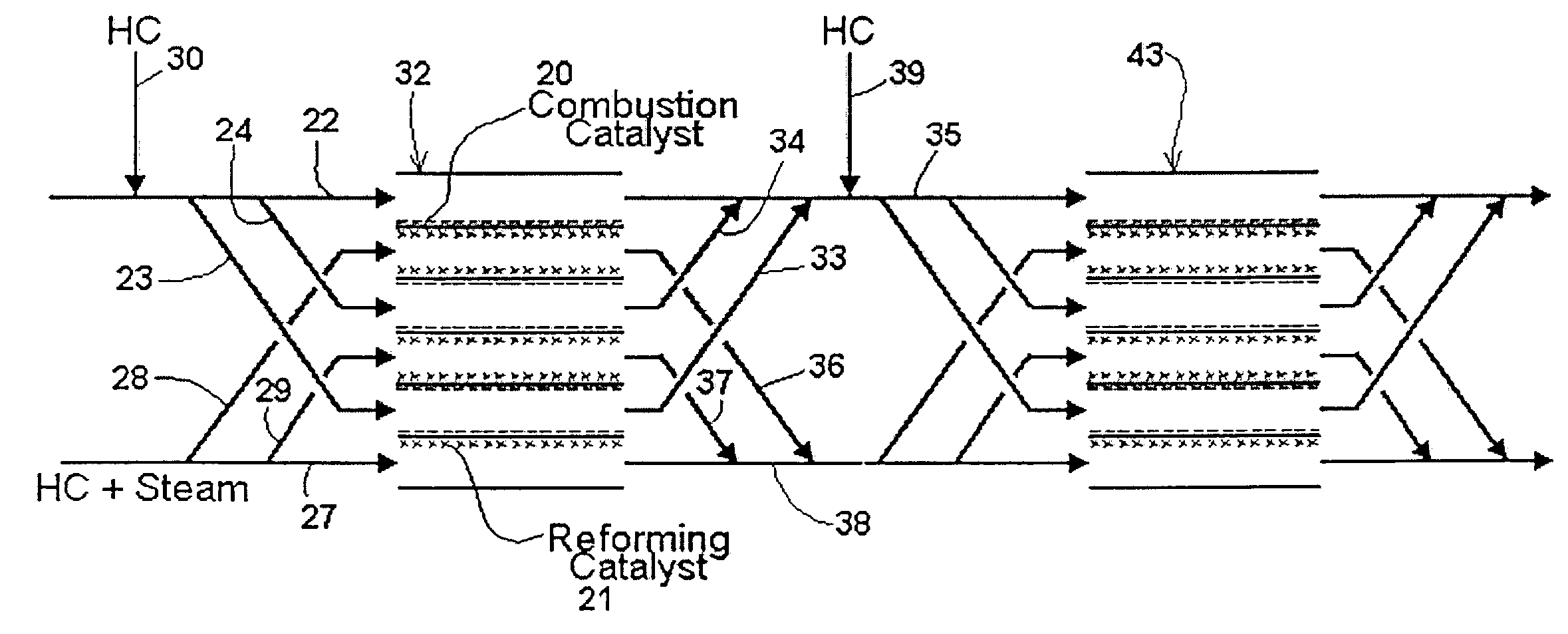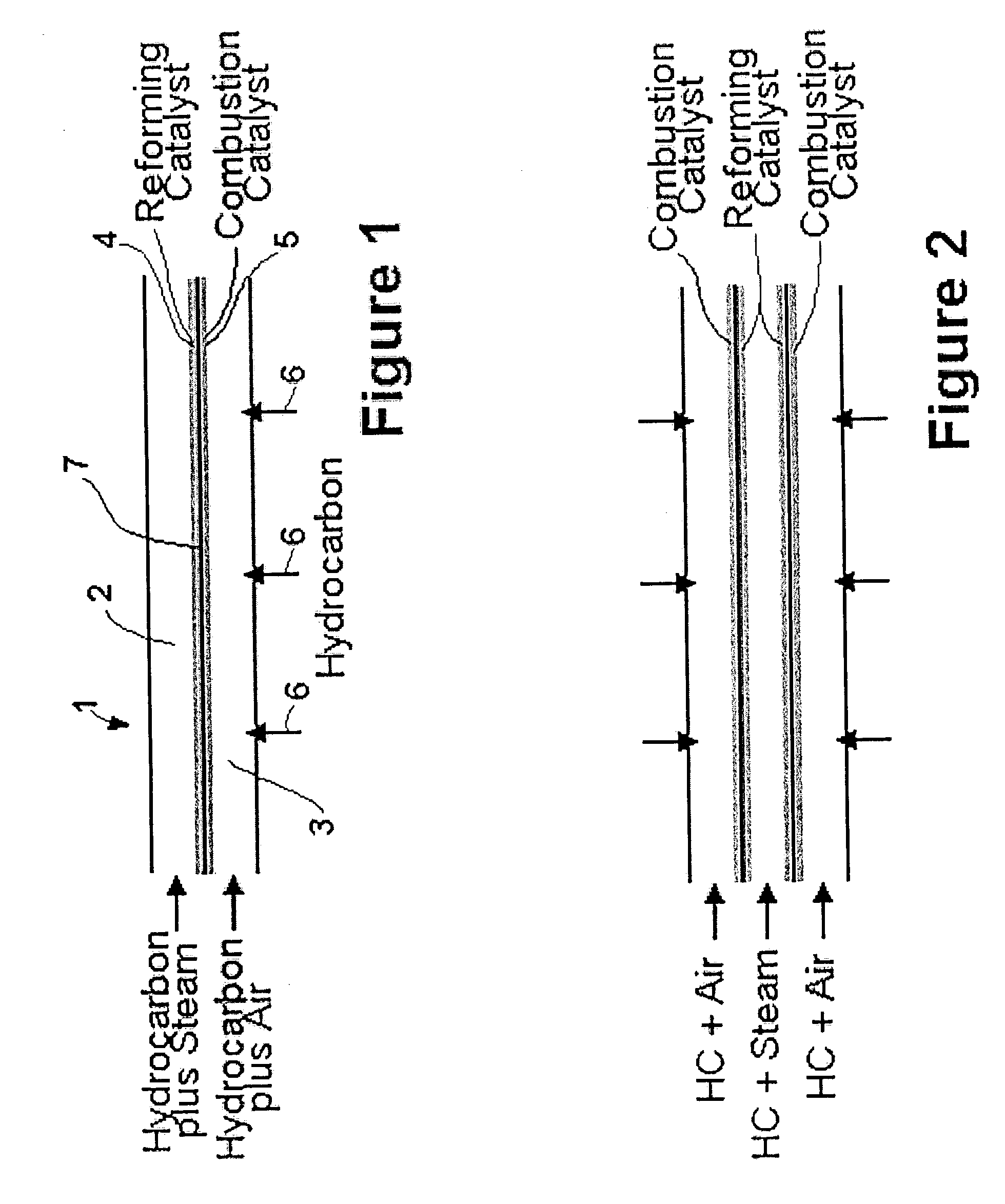Regenerative autothermal catalytic steam reformer
- Summary
- Abstract
- Description
- Claims
- Application Information
AI Technical Summary
Benefits of technology
Problems solved by technology
Method used
Image
Examples
Embodiment Construction
[0038]The simplest form of the invention is shown in the schematic diagram of FIG. 1. Reactor 1 comprises three strips which define two adjacent channels. The first channel 2 is a reforming channel, i.e. it is where the steam reforming reaction occurs. The second channel 3 is a combustion channel.
[0039]In the embodiment shown, the middle strip 7 is coated on one side with reforming catalyst 4, and on the other side with combustion catalyst 5. Thus, first channel 2 has walls which are partially coated with reforming catalyst 4, and second channel 3 has walls which are partially coated with combustion catalyst 5. By “reforming catalyst” is meant a catalyst that promotes the steam reforming reaction discussed above.
[0040]A mixture of a hydrocarbon and steam is injected as shown at the left-hand side of the reforming channel. A mixture of a hydrocarbon and air is injected as shown at the left-hand side of the combustion channel. The hydrocarbon comprises fuel for the combustion.
[0041]Th...
PUM
| Property | Measurement | Unit |
|---|---|---|
| Flow rate | aaaaa | aaaaa |
| Concentration | aaaaa | aaaaa |
Abstract
Description
Claims
Application Information
 Login to View More
Login to View More - R&D
- Intellectual Property
- Life Sciences
- Materials
- Tech Scout
- Unparalleled Data Quality
- Higher Quality Content
- 60% Fewer Hallucinations
Browse by: Latest US Patents, China's latest patents, Technical Efficacy Thesaurus, Application Domain, Technology Topic, Popular Technical Reports.
© 2025 PatSnap. All rights reserved.Legal|Privacy policy|Modern Slavery Act Transparency Statement|Sitemap|About US| Contact US: help@patsnap.com



